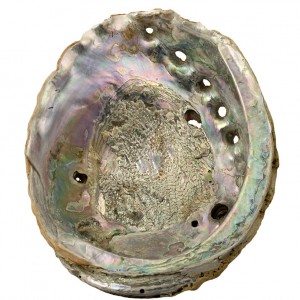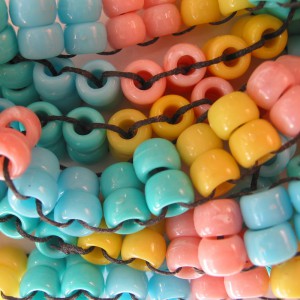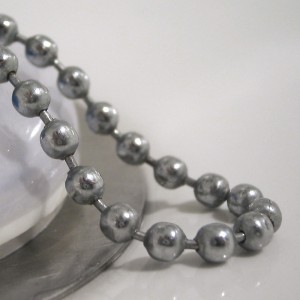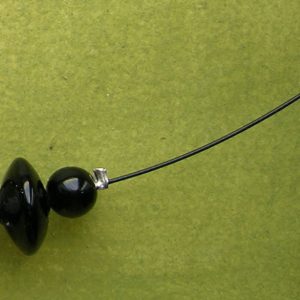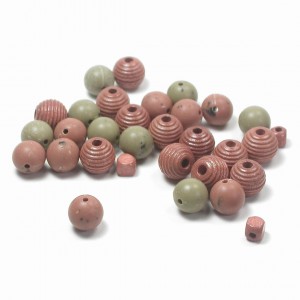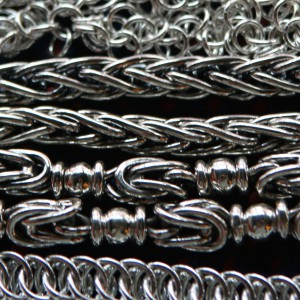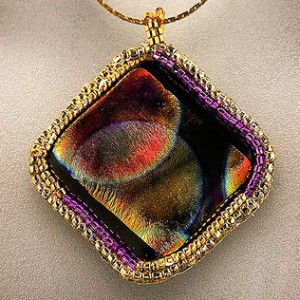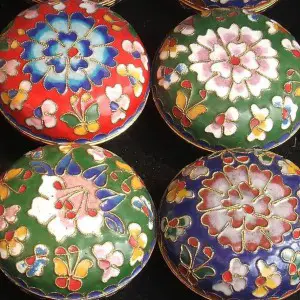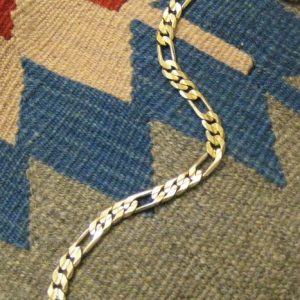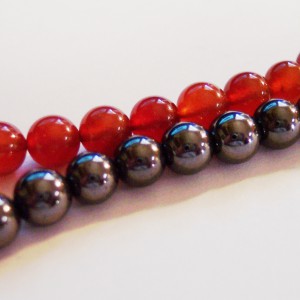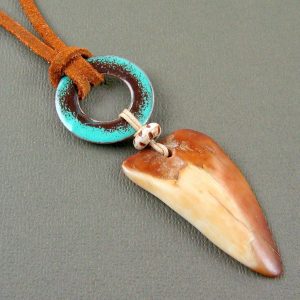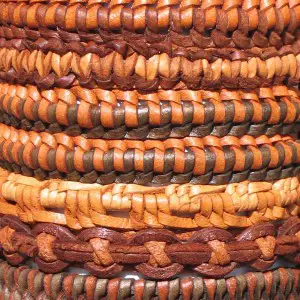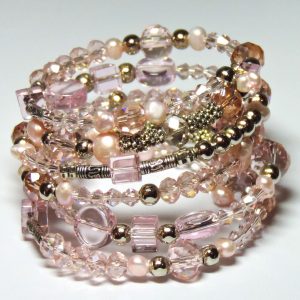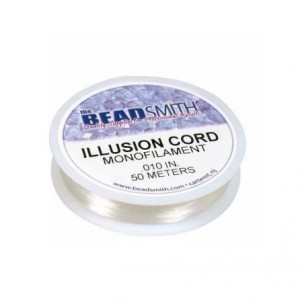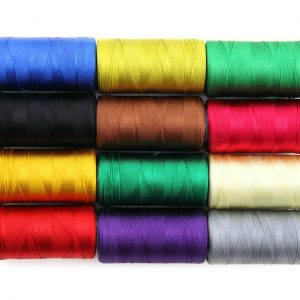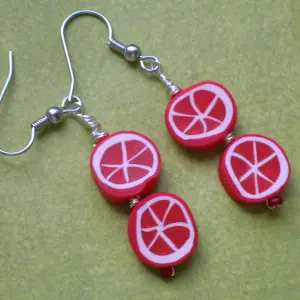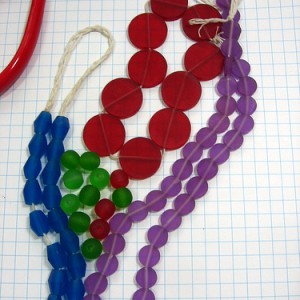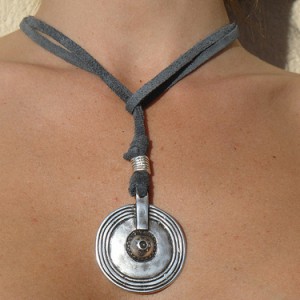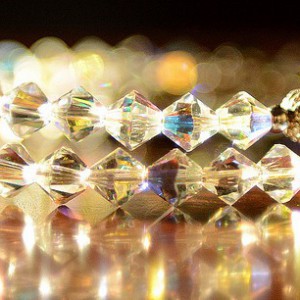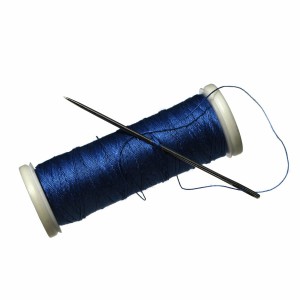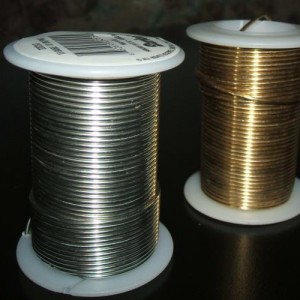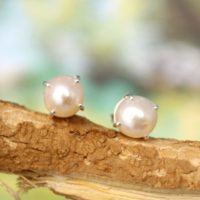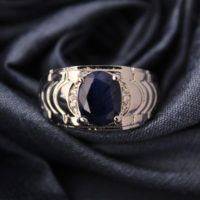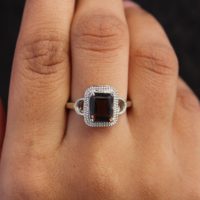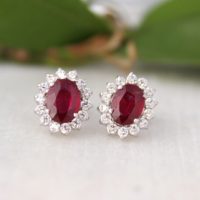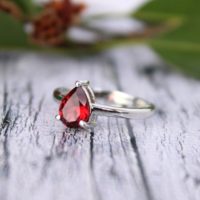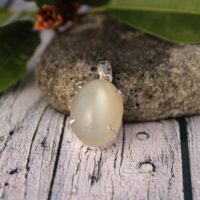Jewelry Making Materials
Abalone
Iridescent pieces of shell from the abalone sea mollusk.
Acrylic
A glassy plastic-like material which can be molded or cast or used in paints and coatings. Acrylic is molded into plastic-like beads or is used to coat beads to give them color or luster. Acrylic beads are available in thousands of shapes and colors, and are generally less expensive than metal or glass beads and can be more durable.
Alabaster
A variety of gypsum (a mineral) which is translucent and milky white, and can be carved into beads or statues. Also sometimes used to refer to white calcite used in a similar manor.
Ball Chain
Chain consisting of small metal spheres, often used in key chains or dog tag necklaces.
Beading Wire
A thin wire or cable made from braiding several strands of thin steel wire together and then coating them with nylon. It is stiff so it does not require a needle to use. Brands of beading wire include Accu-flex, Beadalon, and Soft Flex. Beading wire is extremely strong and durable, although it is prone to kinking. Beading wire cannot be tied in a knot like thread, so jewelry must be finished using crimp beads.
Crystal
This can refer to many things, but in beading it usually means either naturally occuring quartz gemstones, or man-made leaded glass beads. Adding lead to glass beads makes them sparkle more; the more lead, the higher quality the bead. It also adds weight, so really light “crystal” beads are probably just glass. Man-made crystal beads come in a variety of sizes, shapes, and colors like cubes, rounds, rondelles, and specially shaped pendants of all kinds. There are many types of crystals available, but Swarovski crystals seem to be the most popular and are widely considered the highest quality.
Curb Link Chain
A chain in which the links are oval and twisted so they’re made to lie flat.
Dichroic Glass
Glass that has a distinctive and intensely colorful metallic appearance which changes as the piece is viewed at different angles. Sheets of dichroic glass can be purchased and worked using fused glass techniques.
Ebony
Hard dark brown wood from certain tropical trees, often carved into beads and statues. photo credit
Enamel
A silicone-like substance that is baked on metal, glass or ceramic beads to apply decorative color, glossy finishes, or protective coating. Some enamel applications are detailed and contain many colors like a painted floral design. Enamel beads became widely popular during the 60s and throughout the 70s, but were not as common in the 80s and 90s. Today, enamel beads are available from almost any bead retailer and are extremely popular.
Figaro Chain
A figaro chain is similar in style to a curb link chain, but in the figaro chain the links alternate between one long one and three round ones instead of uniform links.
photo creditFimo
A brand of polymer clay. Polymer clay comes in many different colors and can be shaped into beads, which are then baked to harden them.
Hemp
A fibrous plant of the Cannabis family, or the fiber from it. Hemp is used in jewelry primarily to make macrame jewelry, especially chokers. Hemp is one of the most versatile plants on the planet and produces a strong fiber. Until recently it has been illegal to grow in the US because it is related to the marijuana plant, but laws are currently changing due to marijuana becoming legal in certain states.
Ivory
A hard, smooth, white material from the tusks of elephants and sea mammals, used for beads and carved into statues. Harvesting ivory is illegal due to the near extinction of these animals. Synthetic ivory is made from celluloid, casein, and plastic.
photo creditMemory Wire
Memory wire holds its circular shape. Cut a length of it, string on some beads, and bend the ends in a loop. It should stay on your neck or wrist without a clasp. Comes in sizes to fit your neck, wrist, or even finger.
Monofilament
Clear plastic thread used for fishing line. It is almost transparent and requires no needle, but is easily stretched and cut, so you may not wish to use it for finished jewelry if durability is a concern. It is useful for trying out designs. It’s also great for the invisible floating necklace look. Buy Illusion Cord
Nylon
A synthetic material which is very strong and elastic. This is what bead thread and monofilament are made of.
Polymer Clay
A sculpting material which can be formed into shapes and then baked to harden. Polymer clay is available in most craft stores in a wide range of colors, and can be used to make beads and pendants.
Porcelain
A ceramic material made from firing clay at very high temperatures (~1300 Celcius) so the silicate present in clay turns to glass, giving porcelain its characteristic strength and translucence.
photo creditResin
A hydrocarbon secretion of many plants, particularly coniferous trees. It is distinct from sap and latex which are also compounds exuded by plants. The term resin is also used to refer to resin-like polymers. Synthetic resin beads are cast in molds and often have a frosted translucent look reminiscent of sea glass. photo credit
Suede
A type of leather with a napped (fuzzy) finish, rather than leather’s typical smooth finish. Suede is softer and less durable than regular leather. photo credit
Swarovski
A very popular bead manufacturer based in Austria. They are most known for their lead crystal glass beads that come in many shapes and finishes. photo credit
Thread
Several fibers spun into a single strand. Beading thread is made of nylon and is used in beadweaving and loomwork. Other types of thread used in beading include decorative cords such as rattail.
Troy Ounce
1 troy oz = 1.097 oz. This unit of weight is traditionally used for gemstones and precious metals. Dates from the medieval period.
